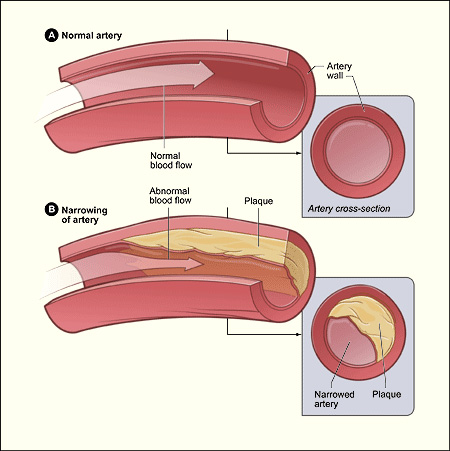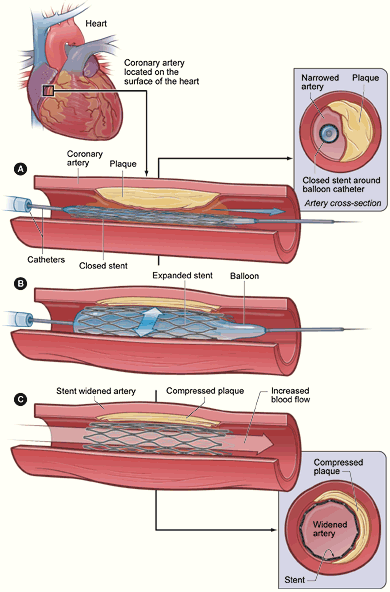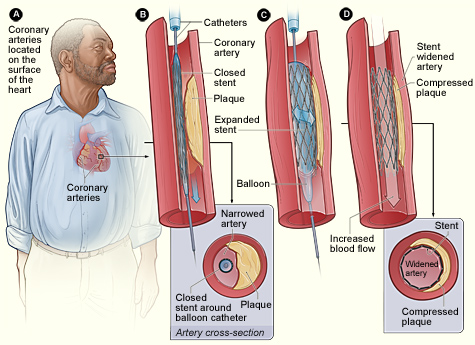Stenting, Percutaneous Coronary Intervention or PCI (also called Percutaneous Transluminal Coronary Angioplasty or PTCA) is a medical procedure in which a balloon is used to open a blockage in a coronary artery narrowed by atherosclerosis. This procedure usually also involves placement of stents to improve the blood flow to the heart.
Atherosclerosis is a condition in which a material called plaque builds up on the inner walls of the arteries. This can happen in any artery, including the coronary arteries. The coronary arteries carry oxygen-rich blood to your heart. When atherosclerosis affects the coronary arteries, the condition is called coronary artery disease (CAD).

(From: http://www.nhlbi.nih.gov/health/dci/Diseases/Cad/CAD_WhatIs.html)
An animation is also available here.
Your doctor will take into account a number of factors when recommending the best procedure for you. These factors include how severe your blockages are, where they’re located, and other diseases you may have.
Angioplasty is often used when there is less severe narrowing or blockage in your arteries, and when the blockage can be reached during the procedure.
CABG might be chosen if you have severe heart disease, multiple arteries that are blocked, or if you have diabetes or heart failure.
Compared with CABG, some advantages of angioplasty are that it:
- May have fewer risks than CABG.
- Isn’t surgery, so it won’t require a large cut.
- Is done with medicines that numb you and help you relax. Unlike CABG, you won’t be put to sleep for a short time.
- Has a shorter recovery time.
Angioplasty also is used as an emergency procedure during a heart attack. As plaque builds up in the coronary arteries, it can burst, causing a blood clot to form on its surface. If the clot becomes large enough, it can mostly or completely block blood flow to part of the heart muscle.
Quickly opening a blockage lessens the damage to the heart during a heart attack and restores blood flow to the heart muscle. Angioplasty can quickly open the artery and is the best approach during a heart attack.
A disadvantage of angioplasty as compared with CABG is that the artery may narrow again over time. The chance of this happening is lower when stents are used, especially medicine-coated stents. However, these stents aren’t without risk. In some cases, blood clots can form in the medicine-coated stents and cause a heart attack. (See “What Are the Risks of Coronary Angioplasty?” for more information.)
Your doctor will discuss with you the treatment options and which procedure is best for you.
Coronary Balloon Angioplasty followed with a stent:

(From: http://www.nhlbi.nih.gov/health/dci/Diseases/Angioplasty/Angioplasty_howdone.html)
The illustration shows a cross-section of a coronary artery with plaque buildup. The coronary artery is located on the surface of the heart. Figure A shows the deflated balloon catheter inserted into the narrowed coronary artery. In figure B, the balloon is inflated, compressing the plaque and restoring the size of the artery. Figure C shows the widened artery.
A stent is usually placed in the newly widened part of the artery. The stent holds up the artery and may lower the risk of the artery “re-narrowing”. Stents are made of metal mesh and look like small springs.
(From: http://www.nhlbi.nih.gov/health/dci/Diseases/Angioplasty/Angioplasty_howdone.html)

